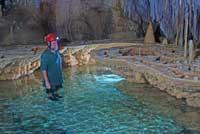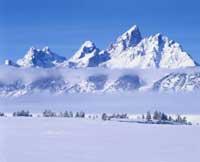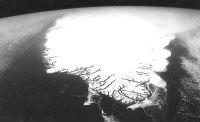Sea level and hand ice
2010/03/14 Kortabitarte Egiguren, Irati - Elhuyar Zientzia

The time when there is a lot of ice or when large masses of ice cover large areas of the Earth is called “glaciation”. At this time, the earth's climate cools and the levels of the seas and oceans diminish. Since the birth of the Earth numerous glaciations have occurred. However, these natural cycles are very irregular and therefore difficult to predict "the last glaciation in Europe lasted up to 25,000 years ago". This is an irregular cycle, as it depends on many factors: the distribution of the continents, the shape of the Earth's orbit around the Sun, the composition of the atmosphere, the activity of the Sun, etc.
Big short-term changes

Numerous studies have been conducted to explain glaciations, measure the effects of these cycles... One of the most important consequences is the incidents that occur at sea level. In fact, sea level rises or falls when melting or forming ice, respectively. About a month ago, according to an article published in the journal Science, the ice of our planet can form and melt faster than expected, so sea level can vary considerably in the short term.
To reach this conclusion, researchers from Iowa University of the USA have studied the stalactites of the cave of Vallgomera in Mallorca and made the measurements of mineral calcite found in them. The geological structures of this cave are suitable for this type of measurement. In fact, for hundreds of thousands of years the cave was immersed in the Mediterranean Sea, allowing to measure sea level variations. On the other hand, this data is valid for the entire planet.

From the data extracted from the Majorcan cave of Vallgomera, researchers have discovered that the sea level 81,000 years ago was one meter above the current one. This means that there was less ice than today and that probably the temperature was somewhat higher than the current one. In addition, they have discovered that sea level grew around two meters in a century. Glaciers melted at full speed, no doubt. It is the first time that such sudden changes in sea level are measured in the short term. According to these data, the amount of ice that melted 81,000 years ago was huge.
This discovery is slightly removed from the traditional theory of glaciations. According to this theory, in a cycle of 100,000 years, ice gradually accumulates and then melts faster. However, this discovery indicates that ice can spread as soon as it is delayed and that these cycles occur in a short space of time. According to researchers, this phenomenon will cause a terrible disaster in the coming centuries, especially in coastal cities.
Published in 7k

Gai honi buruzko eduki gehiago
Elhuyarrek garatutako teknologia






